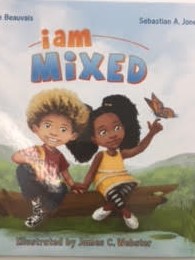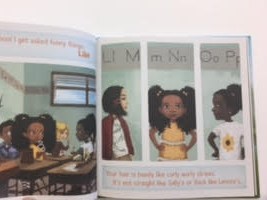

Author: Garcelle Beauvias, Sebastian A. Jones
Illustrator: James C Webster
Published: Stranger Kids September 2014
Pages: 52
Tags: Jamal Jackson, Realistic Fiction, k-5, Picture Book, Multicultural, Diversity, Family
Genre: Fiction
Analysis:
This book is about Jay and Nia, who are a set of biracial twins. Throughout the book the children go on an adventure where they explore the identity of having mixed cultural back grounds. They learn to love themselves and appreciate who they are and how they are different than others.
This book serves as both a mirror and a window. Children that may be mixed and not sure of where they fit in to society can read this and relate to Jay and Nia. Seeing the twins navigate in their daily lives while learning to appreciate their heritage could be a teaching point for biracial children. Non biracial children can read this story and use it as a window into the shoes of someone that experiences life differently than they do. They can learn the concept of tolerance for individuals that may look different than they do.
The book’s message communicates an ideology of self-love and acceptance, along with pride in ones heritage. This is important to communicate to biracial children as they may be confused as to what/who they are. Instead of feeling uncomfortable and unsure, it is great for a child to feel like they are “the best from all over the world.” The stressing of family importance throughout the book is also a positive ideology. Instead of a child trying to identify with one parent over the other, they operate as an all-inclusive unit. The children learn to truly identify with both parents.
The illustrations also help to add to the message. The twins themselves are different skin tones with different hair textures which helps make the book more relatable to children reading it, since biracial children can have a range of characteristics and traits from their parents. The use of bright fun imagery while the children are learning to be proud of themselves also helps to add happiness and joy to the idea of loving oneself. The use of diverse characters and scenery also helps communicate the ideology of tolerance and inclusiveness
